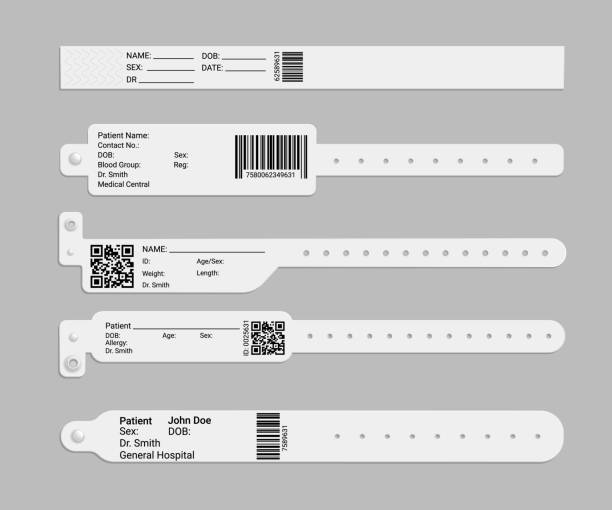Patient Identification Band: Enhancing Correctness and Efficiency in Hospitals
Patient Identification Band: Enhancing Correctness and Efficiency in Hospitals
Blog Article
Exploring the Numerous Kinds of Patient Identification Band Used in Clinical Facilities
In the detailed globe of healthcare, the essential function of Patient Identification bands typically goes undetected. These bands, differing from basic paper wristbands to advanced RFID bands, create the backbone of Patient safety and security protocols, making certain accuracy in Patient Identification.
Recognizing the Relevance of Patient Identification Bands
While they might seem like simple devices, Patient Identification bands play a vital duty in medical facilities. These bands serve as a vital tool for verifying Patient identification, protecting against clinical mistakes connected to misidentification. Patient Identification bands additionally aid in streamlining administrative tasks, guaranteeing precise record-keeping and billing.
Typical Paper Wristbands: Their Use and Limitations
Traditional paper wristbands have been a staple in Patient Identification throughout numerous medical facilities. While their use is widespread, they nurture certain limitations that may influence their performance in Patient administration. This section will certainly concentrate on the extent of their application and the intrinsic downsides related to their use.
Paper Wristbands: Usage Scope
In the world of Patient Identification, paper wristbands have actually long held an essential duty. These bands are usually used in outpatient settings, where the Patient's remain is short-lived. Regardless of innovations in modern technology, the simple paper wristband continues to be a affordable and reputable remedy for Patient Identification in different medical care circumstances.
Limitations of Paper Wristbands
Regardless of their prevalent usage, paper wristbands are not without their drawbacks. Their physical sturdiness is one of the significant limitations. Direct exposure to water, sweat, or misuse can make them unreadable or perhaps create them to degenerate. In enhancement, paper wristbands commonly do not have the technological capacities of even more modern-day options, such as barcoding or RFID chips, limiting their functionality to merely presenting written details. The lack of ability to update or modify the information on the wristband is one more shortcoming. If the information is transcribed, clarity can be compromised, leading to potential misidentification. Finally, paper wristbands can trigger discomfort or skin irritability to some individuals, especially when put on for prolonged durations.
Barcoded Wristbands: Innovations in Patient Identification
While Patient Identification has actually long been an essential element of medical care, the arrival of barcoded wristbands indicates a substantial jump onward. These bands utilize the simpleness of barcoding innovation, allowing for Patient details to be promptly checked and accessed. They boost the speed and accuracy of Patient Identification, lowering the risk of clinical mistakes associated to misidentification.
Superhigh Frequency Identification (RFID) Bands: a Step In The Direction Of Futuristic Healthcare
The evolution of Patient Identification bands has caused the emergence of Superhigh frequency Identification (RFID) Bands (patient identification band). These ingenious tools existing essential advantages for medical care centers, providing a more reliable and technically progressed ways of Patient Identification. The application of RFID in healthcare is a substantial step in the direction of a much more futuristic strategy to Patient monitoring official website and security
Understanding RFID Bands

RFID Bands: Trick Benefits
Largely, these bands improve Patient safety by supplying precise, instantaneous Identification, therefore minimizing clinical errors. RFID bands can keep a large quantity of Patient information, consisting of clinical background and allergic reactions, making it possible for customized treatment. Generally, RFID bands stand for a substantial improvement in Patient Identification technology, benefiting both individuals and medical care carriers.
Carrying Out RFID in Healthcare
These bands supply a smooth means to track and recognize clients, ensuring their safety and improving effectiveness in treatment procedures. RFID bands reduce clinical errors by supplying accurate Patient Identification, which is essential in stopping misdiagnosis or incorrect medicine administration. Therefore, the application of RFID bands is a substantial step towards improving Patient safety and security and health care distribution.

Color-Coded Wristbands: Aiding in Quick and Accurate Medical Diagnosis
In the bustling environment of a medical center, color-coded wristbands have actually arised as vital tools for swift and precise Identification of a person's clinical condition. These wristbands, worn by people, bring certain shades that correspond to various medical conditions or conditions. This system is made to offer prompt visual hints to medical care service providers, boosting Patient safety and care top quality.
Strategies for Efficient Execution and Administration of Patient ID Bands
Achieving ideal usage of Patient Identification bands requires a well-structured approach for their application and management. The click to read primary step entails training all wellness personnel on the importance of properly applying and reviewing these bands. Hospitals ought to systematize the use of ID bands across all divisions, guaranteeing harmony and reducing inconsistencies. Regular click here to find out more audits needs to be performed to confirm adherence to policies and to fix any kind of variances. Patient education is also essential; clients need to understand the purpose of the bands and the requirement for their consistent wear. patient identification band. Last but not least, it's necessary to have a back-up strategy in place, such as barcode scanning or biometrics, to make certain that Patient Identification is never ever compromised.
Conclusion
Patient Identification bands are important in clinical facilities to ensure safety and precision. Efficient implementation and administration of these bands can significantly decrease medical errors, enhance effectiveness, and improve total Patient treatment.
These bands, varying from basic paper wristbands to innovative RFID bands, form the foundation of Patient safety and security protocols, guaranteeing accuracy in Patient Identification.The development of Patient Identification bands has brought about the development of Radio Regularity Identification (RFID) Bands. In general, RFID bands stand for a considerable development in Patient Identification modern technology, profiting both people and health care companies.
RFID bands reduce clinical mistakes by providing exact Patient Identification, which is crucial in preventing misdiagnosis or incorrect medication management. Patient education and learning is additionally essential; people have to comprehend the purpose of the bands and the demand for their consistent wear.
Report this page